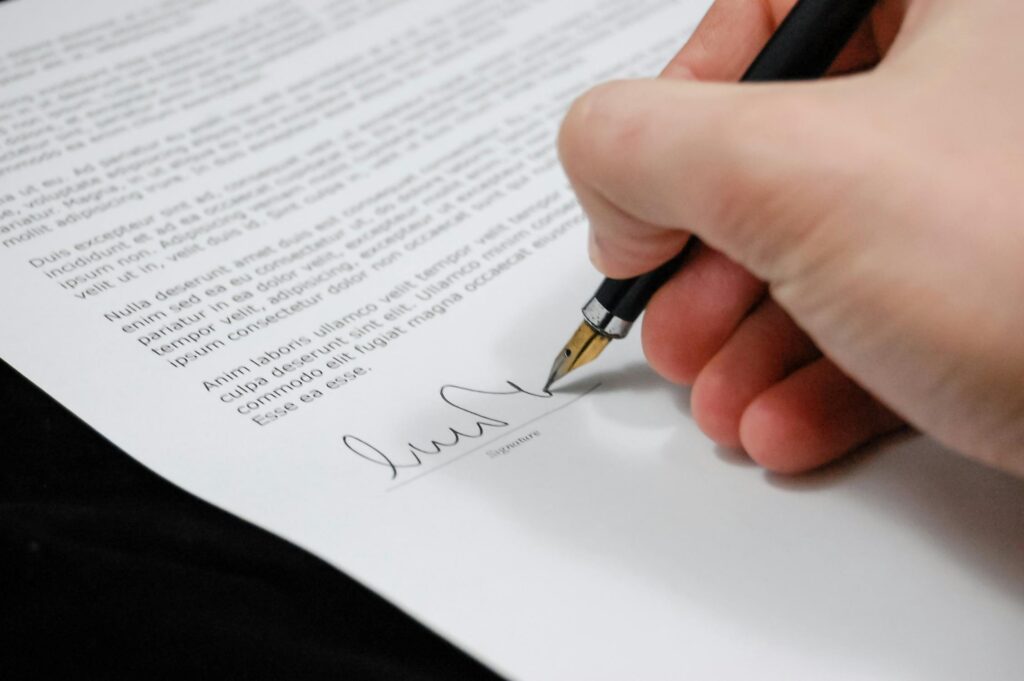Creating a signature might seem like a simple task, but it holds a significant place in your personal and professional life. A well-designed signature can be a powerful tool for personal branding and legal identification. So, let’s explore how you can come up with a signature that not only represents you but also stands out.
Why a Signature is Important
Legal Significance
Your signature serves as a legal identifier. It’s used to verify your identity on important documents like contracts, checks, and legal papers. A clear, consistent signature helps prevent fraud and ensures your documents are authenticated.
Personal Branding
Beyond legal matters, your signature is a part of your personal brand. It’s a unique mark that can convey your personality and style. Think of it as your personal logo – it should be memorable and distinctive. Using an online signature maker can help you create a signature that truly reflects your identity and stands out in a digital world.
Understanding the Elements of a Signature
Letter Style
The style of your letters is a fundamental aspect of your signature. You can choose from cursive, print, or a combination of both. Each style can convey different aspects of your personality. Cursive might come off as elegant and traditional, while print can appear more modern and straightforward.
Size and Proportion
The size of your signature matters too. A larger signature might suggest confidence, while a smaller one can indicate a more reserved nature. Balance is key – your signature should be proportionate and not too overwhelming or too tiny.
Flourishes and Embellishments
Adding flourishes and embellishments can make your signature stand out. These are the unique loops, swirls, and lines that give your signature a personal touch. However, it’s important not to overdo it – too many embellishments can make your signature hard to read.
Steps to Create Your Signature
Brainstorming Ideas
Start by brainstorming ideas. Think about what you want your signature to convey. Do you want it to be elegant, bold, simple, or artistic? Look at examples of other signatures for inspiration but aim to create something uniquely yours.
Practicing Different Styles
Once you have an idea, start practicing. Experiment with different styles, sizes, and flourishes. Don’t rush this process – it might take time to find a style that feels right.
Refining Your Choice
After practicing, refine your choice. Pick the elements you like best and start combining them. Your goal is to create a signature that feels natural and easy to reproduce consistently.
Signature Styles to Consider
Traditional Signatures
Traditional signatures often use cursive and are more formal. They are typically used in professional and legal contexts. This style is timeless and can convey a sense of reliability and trust.
Modern Signatures
Modern signatures are usually simpler and can include a mix of print and cursive. They are often more readable and can convey a sense of openness and approachability.
Artistic Signatures
Artistic signatures are highly stylized and often used by artists and creatives. These signatures can be elaborate and unique, making them a strong personal statement.

Tools and Resources for Designing a Signature
Online Signature Makers
There are various online tools available that can help you design your signature. Websites like MyLiveSignature and SignWell offer templates and customization options to create a digital version of your signature.
Professional Calligraphers
If you want a truly unique and professional signature, consider hiring a calligrapher. These professionals can help you design a signature that’s both beautiful and functional.
Practicing Your Signature
Daily Practice Tips
Consistency is key to a good signature. Practice your signature daily until it becomes second nature. Use a variety of pens and papers to ensure it looks good in different contexts.
Using Guidelines
Use guidelines to help you maintain consistent size and spacing. Draw faint lines on your practice paper to guide your hand.
Common Mistakes to Avoid
Overcomplicating the Design
While flourishes can add personality, too many can make your signature illegible. Keep it simple and ensure it’s easy to read.
Inconsistency
Your signature should look the same every time you write it. Practice until you can produce a consistent signature without much effort.
Legal Aspects of Your Signature
Ensuring Consistency Across Documents
For legal purposes, your signature must be consistent across all documents. Inconsistent signatures can raise questions about authenticity.
Using Your Signature in Digital Formats
With the rise of digital documents, you’ll need a digital version of your signature. Use a reliable digital signature tool to ensure your electronic signatures are secure and recognized legally.
Personal Touches and Customization
Adding Unique Elements
Incorporate unique elements that reflect your personality. This could be a specific flourish, the way you cross your ‘t’s, or the loop in your ‘y’.
Reflecting Your Personality
Your signature should feel like an extension of yourself. Whether it’s bold and dynamic or neat and minimalistic, it should resonate with who you are.
Examples of Famous Signatures
What Makes Them Stand Out
Look at famous signatures like those of John Hancock, Walt Disney, or Marilyn Monroe. What makes these signatures memorable? Often, it’s their distinct style and confidence.
Lessons to Learn
From famous signatures, you can learn the importance of distinctiveness and consistency. A memorable signature often has a unique flair that sets it apart.
Signature in Different Contexts
Professional Use
In professional settings, your signature should be clear and professional. Avoid overly artistic elements that might seem unprofessional.
Artistic Use
Artists often have more freedom to create elaborate signatures. These can be more expressive and serve as a part of their artwork.
Legal Use
For legal documents, clarity and consistency are paramount. Ensure your signature is easy to read and replicate.
Adapting Your Signature Over Time
Evolving Your Style
Your signature can evolve over time. As your style and personality change, your signature can adapt to reflect these changes.
Maintaining Recognizability
Even as it evolves, your signature should remain recognizable. Make gradual changes to avoid confusion.

Protecting Your Signature
Avoiding Forgery
To protect against forgery, avoid posting images of your signature online. Use watermarks on documents you share publicly.
Legal Protections
Consider registering your signature if it’s a crucial part of your brand. This can provide legal protection against unauthorized use.
Conclusion
Creating a signature is an art that blends personal expression with practical necessity. By understanding the elements and practicing diligently, you can develop a signature that truly represents you. Remember, your signature is more than just a name on a page – it’s a reflection of your identity.
FAQs
- How long does it take to create a signature? It varies for each person. Some might find their ideal signature in a few days, while others might take weeks of practice and refinement.
- Can I change my signature later? Yes, you can change your signature. Just ensure that the new signature is used consistently across all documents to avoid any legal issues.
- Are digital signatures legally binding? Yes, digital signatures are legally binding in many countries. Ensure you use a reliable digital signature tool to comply with legal standards.
- Do I need a fancy signature for professional purposes? Not necessarily. A clear and consistent signature is more important than an elaborate one in professional settings.
- Can I use my initials as my signature? Yes, using initials is a common practice. Ensure they are unique and consistently used.





